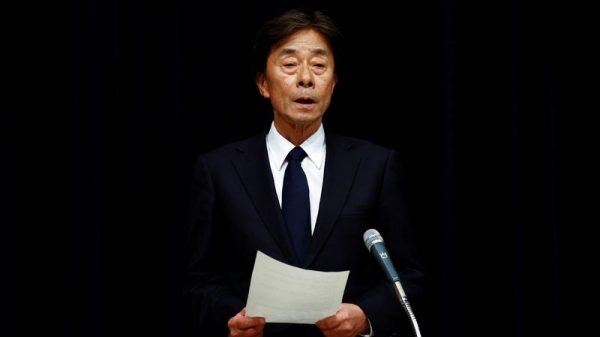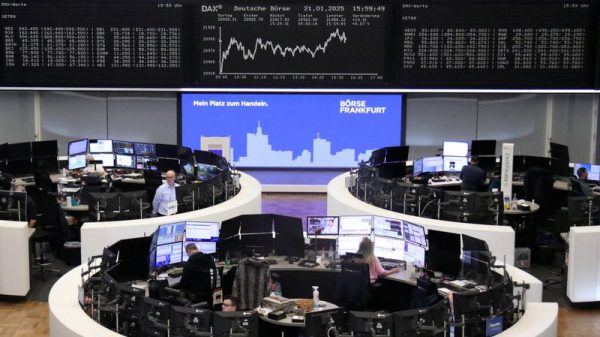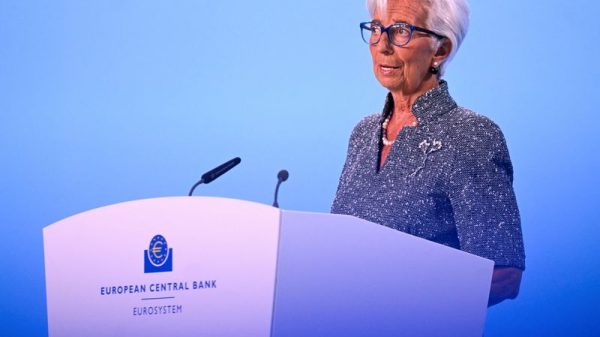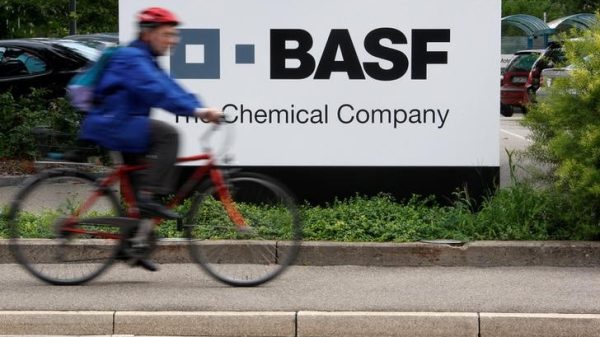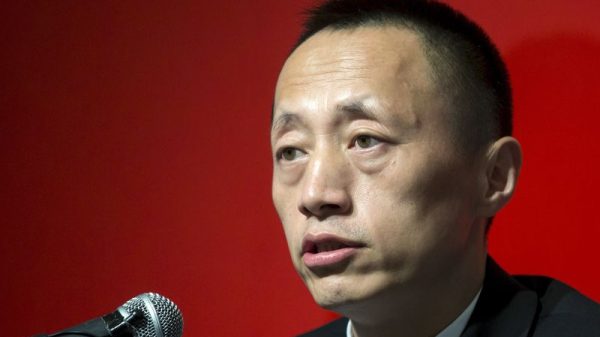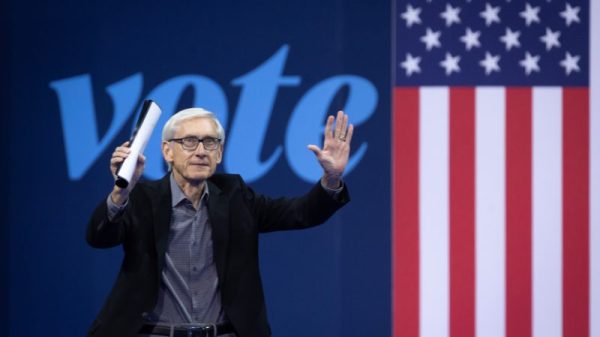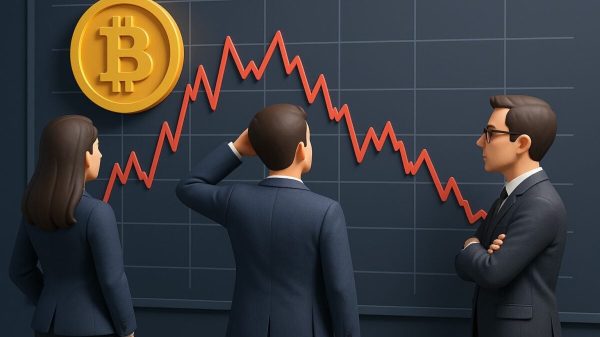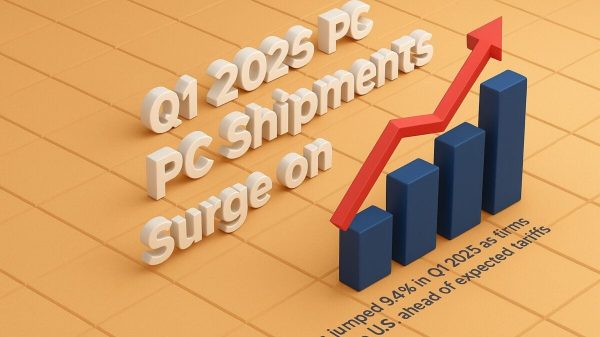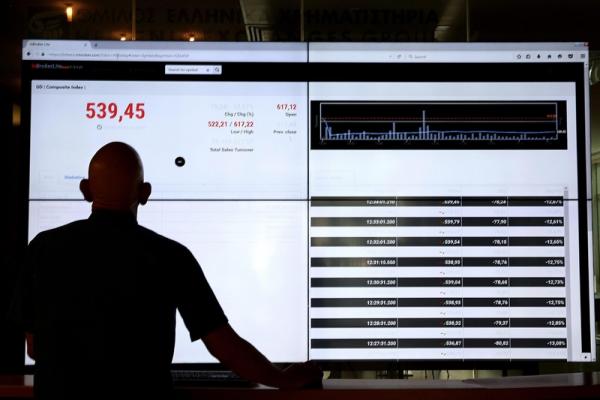Jeronimo Martins, the international food retailer, reported a 10.3% increase in total sales for the first nine months of 2024, reaching EUR 24.8 billion despite a challenging economic environment. The company, which operates the Biedronka banner in Poland, experienced basket deflation but still achieved sales growth and market share expansion.
EBITDA for the period rose by 2.7% to EUR 1.6 billion, although the EBITDA margin decreased to 6.6%. The company revised its CapEx guidance down to just over EUR 1 billion for the year, reflecting a cautious approach amid ongoing market uncertainties.
Key Takeaways
Total sales for Jeronimo Martins increased by 10.3% to EUR 24.8 billion.
Like-for-like sales growth stood at 0.3%, adjusted from a previously reported 3%.
EBITDA grew by 2.7% to EUR 1.6 billion, while the EBITDA margin fell to 6.6%.
The company opened 104 new stores and refurbished 156 in Poland.
CapEx guidance for 2024 has been adjusted to just over EUR 1 billion.
The outlook for the remainder of the year remains cautious due to market uncertainties.
Company Outlook
Management maintains a cautious outlook for the future, with a solid balance sheet and a net cash position of EUR 413 million.
The company anticipates a challenging Q4 due to a strong comparison base from the previous year’s volume growth.
Projections for food inflation are uncertain, with expectations of strong single-digit inflation, but actual figures could be lower.
Bearish Highlights
Gross margins in Poland decreased by approximately 20 basis points due to pricing investments and a significant rise in operational wages.
Consumer demand in Poland is weak, with a focus on savings impacting food spending.
The competitive landscape in Poland is expected to remain aggressive, with ongoing store openings.
Bullish Highlights
Sales and market share in Poland grew despite significant basket deflation.
Gross margin in Q3 was slightly better than anticipated, showing resilience in a tough environment.
The company’s long-term strategy remains focused on profitability and market positioning.
Misses
The EBITDA margin contracted due to operational deleverage and wage increases.
The CapEx program was reduced, signaling adjustments in the company’s investment strategy.
Q&A Highlights
The like-for-like sales growth correction to 0.3% reflects mixed regional results.
Management is uncertain about the pricing environment for 2025, with potential for deflation or stable prices in the first half of the year.
Opportunities for new store openings in Poland, especially in smaller towns, are being pursued, with careful evaluation of each location’s return on invested capital.
Jeronimo Martins (JMT.LS) continues to adapt to the dynamic market conditions, balancing growth initiatives with cost management. The company’s performance in the first nine months of 2024 demonstrates resilience in the face of reduced food inflation, rising costs, and weak consumer demand.
With a strategic approach to capital expenditure and store expansion, Jeronimo Martins is positioning itself to navigate through market uncertainties while maintaining a commitment to long-term profitability and market presence.
Full transcript – None (JRONF) Q3 2024:
Operator: Good day, and welcome to Jeronimo Martins First Nine Months 2024 Results Conference Call. Today’s conference is being recorded. At this time, I would like to turn the conference over to Ms. Ana Luisa Virginia, Chief Financial Officer of Jeronimo Martins Group. Please go ahead, madam.
Ana Virginia: Thank you, Pete. Good morning, ladies and gentlemen, and thank you for joining this call to present our nine months results. In our corporate website, you can find the results release, a slide presentation and fact sheet for the period. 2024 has been so far, extremely challenging. As expected, the combination of a rapid decrease in food inflation and significant cost increases, together with weak consumer demands are driving more intense competition and pressuring margins. Despite this demand in context, we have delivered on our key strategic targets to grow sales and strengthen market positions. Our banners maintain their price competitiveness and continue to improve value propositions, ensuring consumer preference, consistently growing volumes and gaining market share. Notwithstanding the strong volume performance, EBITDA margin for the first nine months was impacted by the operational deleverage generated from basket deflation and significant cost inflation. Still, the balance sheet remains solid with net cash position, excluding IFRS 16, standing at EUR 413 million by the end of September. In the first nine months of the year, our markets faced a substantially low food inflation compared with the extremely high figures of 2023. In Poland, food inflation fell until March, then rose in April with the reintroduction of VAT on basic food products and has continued rising since then. Despite the increase in real income, consumer demand kept shy and food retail sales remain subdued, further fueling price competition between the players. In Portugal, consumers continuedly highly focused on price opportunities and promotions in the food retail market, while the HoReCa channel revealed a slowdown trend as it laps a strong performance in the prior year comparatives. In Colombia, declining food retail volumes and trading down reflected the continued pressure over real household incomes in the country. In the first nine months of the year and despite Biedronka and Pingo Doce operating with basket deflation, sales grew 10.3%, 4.7% at constant exchange rates due to the contributions from volume increases and network expansion. The pressure on operational leverage largely reflects the headwind impact of basket deflation coupled with significant wage increases. All in all, EBITDA in euros increased 2.7%, a decline of 2.9% at constant exchange rates with a margin pressure of 49 basis points. Execution of our CapEx program resulted in higher depreciation charges and increasing net financial costs due to the capitalization of leases. The financial costs also include the impact of higher average debt than in previous years and with increased waste of financing costs in Colombian pesos. Other profit and losses that were at minus EUR 74 million include the initial endowment of EUR 40 million to the Jeronimo Martins foundation. It also incorporates the write-offs resulting from store re-modeling projects and some restructuring costs. Net earnings per share, excluding other profit and losses of a nonrecurrent nature, fell by 13.8%. In the Q3 P&L, we observed the same trends of the nine months. I want to make an important remark on the gross margin evolution. Despite the pressure on Biedronka gross margin in Q3 from price investments, there were two positive effects that more than offset it at group level. The first relates to Pingo Doce, which although continuing to invest in price, benefited from a positive margin mix as the company successfully expanded the Meal solutions and perishable categories. The second came from Ara, which is executing an assertive and selective commercial strategy. By introducing changes to its promotional activity, while guaranteeing a leading price position, the company delivers a positive margin mix impact. Cash flow generated in the period was negative in EUR 387 million, impacted with significant extent by the slowdown in growth as we transition from very high food inflation to food deflation. I also flagged that September this year, contrary to September 2023 and also to June 2024, ended on a weekday rather than on a weekend, which brought a negative calendar impact to both stocks and suppliers. Relying on a solid balance sheet, we ended September with a positive cash position of EUR 430 million. I will now guide you through the details of the performance, starting with sales. Total sales grew by 10.3%, 4.7% at constant exchange rates to reach EUR 24.8 billion. All banners contributed to the additional EUR 1 billion of sales generated in the nine months of the year if we exclude the currency effect. Group like-for-like was at 3.0% with volume growth offsetting the important basket deflation of Biedronka. In Poland, price has been more than ever before the decisive shopping factor. And in this respect, Biedronka continues to lead the market having even further reinforced its commercial strategy in face of a more intense competition. On top of its historically strong sales performance track record, the banner continued to deliver solid volume growth throughout the nine months. In the period, basket deflation significantly impacted like-for-like growth at a slightly lower rate in Q3 than in Q2. In a market that is experiencing negative sales volumes, Biedronka ended the period with a strengthened position. Having again balanced the preference of its vast consumer base, our main banner continued to outperform the market and increased its respective market share by 50 basis points year-to-date August. Total sales grew by 10.4%, plus 3.9% in local currency to reach EUR 17.5 billion. In the nine months period, Biedronka opened 104 stores, 90 net additions and refurbished 156 locations. HeBe performed well across the period and sales grew by 20.6% in local currency, including a like-for-like of 11%. E-commerce continue to develop and being a strong growth driver for our health and beauty banner. Pingo Doce increased sales by 4.7% to reach EUR 3.7 billion, including a 4.4% like-for-like without fuel, driven by strong performance in volumes. The banner also operated with basket deflation in the nine months period. Pingo Doce kept an intense promotional activity while reinforcing its drivers of differentiation, new solutions and perishables through the ongoing rollout of the all about food store concept. In the nine months period, 50 more stores were refurbished to this new concept and six stores were opened, a net increase of three. Recheio grew sales by 1.8% to reach EUR 1 billion. HoReCa channel in Portugal continued to be impacted by a weak domestic out-of-home consumption. However, Recheio intensified its commercial dynamics to protect sales performance and grow clients in all segments. Ara adjusted its promotional activities to match the consumers’ needs, maintaining an intense commercial dynamic and providing good saving opportunities to the Colombian families. The pressure on like-for-like reflects an extremely weak consumer demand in light of persistently high food prices. Nevertheless, Ara continues to advance the expansion of its network according to plan, taking advantage of the market opportunity to reinforce its presence in the neighborhoods. So far, 87 stores were opened this year. The banner remains on track to achieve its target of 150 new stores in 2024 with Q4 being typically the busiest quarter in terms of new store openings. In the period, sales increased by 10.9% in local currency, a 21.5% growth in euros to reach EUR 2.1 billion. Consolidated EBITDA grew by 2.7% in euros, a reduction of 2.9% at constant exchange rates, reaching EUR 1.6 billion. I would like to flag a couple of things here. At Biedronka, EBITDA evolution reflects the impact of the very challenging combination of significant basket deflation and cost inflation, reinforced price leadership adds to the pressure. The good work being done by Ara’s team allowed for solid EBITDA improvement despite soft top line performance. And on the central costs, that in Q3 ’24 were below the same period of 2023, please take note that this was only partially due to savings as there are also some cost headings affected by calendar mismatch that can still take place in Q4. Group EBITDA margin fell to 6.6% from 7.1% in the nine months of 2023. At Biedronka, the pressure on margin was mainly driven by lower sales growth due to basket deflation and increased waste of costs, essentially coming from the decision to significantly raise the wages of operational teams. Gross margin, though resilient in this context was also down following price investments. HeBe’s margins slightly improved as a result of good sales performance. In Portugal, despite the positive margin mix effect at Pingo Doce, price investment was a constant feature and was reinforced in Q3, particularly in the case of Recheio. And finally, in Colombia, as planned, Ara has been able to improve EBITDA margin by 127 basis points in the nine months. In summary, we have operated under challenging circumstances that combined basket deflation, high-cost inflation, price investment and unresponsive consumer context. Our teams have their strategy is clear and are working relentlessly to deliver on their priorities by continuously enhancing our value propositions, pushing for sales and volumes by expanding the customer base reinforcing market shares and executing the expansion strategy as planned. There is also a lot of work being undertaken to protect the efficiency of our business models and help mitigate the pressure from operational deleveraging. Our banners did well and are well prepared to continue to deliver as we enter the last months of the year and get ready for the Christmas season, and the context that still face a lot of uncertainty, and that show no signs of softening. Our outlook remains largely unchanged, though we now expect CapEx to be just over EUR 1 billion for 2024, down from the EUR 1.2 billion previously given as guidance, reflecting some timetable adjustments, namely on remodeling projects. Store expansion programs will be delivered as expected. Thank you for your attention. Operator, I am now ready to take questions.
Operator: [Operator Instructions] And our first question is coming from Joao Pinto from JB Capital.
Joao Pinto: The first one, could you please quantify the basket deflation in Q3 in Poland? And how has it evolved through the quarter? I’m trying to understand if basket deflation has slowed down between July and September? Then three quick ones on costs. Can we assume that gross margin in Poland was flat? And could you tell us how big was the tailwind from energy costs if that was relevant and if you could quantify it would be great? And finally, on holding costs, you mentioned some mismatches in terms of calendar. How should we think about this line for the fourth quarter?
Ana Virginia: So on basket deflation in Poland, as I referred, it slowed down. So we still operate with quite significant basket deflation in Biedronka, but at a softer rate than in the first half. I believe that by then, I told that we had slightly below 6%. Now we are slightly ahead of 4% on the third quarter. On the gross margins in Poland. As I also mentioned in this introduction, it was not flat. We — as anticipated and expected, we invested more in prices. So our gross margin was, in fact, down. We usually do not provide this. But as the mix may be were misleading in terms of the consolidated numbers, I can tell you that we have to invest around 20 basis points in the gross margin for Poland. As for the tailwind energy costs, in fact, it’s true that we had some savings in terms of the waste of energy costs on the P&L of Biedronka. But this is a minor tailwind compared with the decision or the impact of the decision to really follow the minimum wage increases and increase the operational teams wages by almost 20%. So it’s not really quite significant compared with that. But it has been or helping somehow to mitigate the other cost increases, namely on rents. As for the holding costs, as I mentioned, I think that you should not take this quarter as a proxy for the other quarters. As you may imagine, we do not have — our costs are in percentage of sales, not that significant. In fact, of course, when we are talking about the year where all costs matter, a slight change or increase or decrease, is notable. In our case, each project that we entered and when we have to pay EUR 1 million or EUR two million or EUR 3 million may be a difference depending on the timetable. I think that the good proxy is to maintain the same level as the yearly costs, so not looking so much at the quarter evolution, but the yearly costs with, of course, some inflation, at least, and depending on the different projects on the IT, on sustainability, et cetera, we may flag some other adjustments. But there is only a mismatch. So there — as I mentioned, there are some savings, but they are not material to say that the cost will be very different from the prior year.
Operator: And the next question comes from Nicolas Champ from Barclays.
Nicolas Champ: I have three. The first one is in July, you guided towards a higher EBITDA margin contraction in Poland in H2 versus H1. Is this guidance still relevant? Or maybe do you expect slightly more positive evolution given your Q3 performance? The second is about your slight reduction in your CapEx program from EUR 1.2 billion initially to just over EUR 1 billion. You said you maintained your new store opening program, both in Poland and Portugal. You also kept your program of store remodeling in Poland unchanged. So could you elaborate a bit more on where the stemming or the lower CapEx stem from? And a third question, if I may. Could you update us on the current trading in Poland at the start of Q4. And maybe also give us some color regarding the sales evolution in Poland during the third quarter, more specifically in September given the impact of flooding, for instance?
Ana Virginia: So on the guidance of the EBITDA pressure, yes, it’s true that — it was a little bit better than we probably anticipated. I think that we have three months to go. We have to acknowledge that sales during these three months will be highly dependent on the Christmas season. Of course, usually, on average, they are higher than in other quarters. And of course, the type of cost increases is more or less the same as in previous quarters. So I think that we maintained the guidance to continue to have a pressure if it’s going to be higher than what it has been until now, it will only depend if the Christmas season will not be going as good as probably we will want it to be. On the slight reduction of the CapEx program, it’s basically on the refurbishment and on some, as I mentioned, some tight table adjustments. So the refurbishments of Pingo Doce will end up to be on the low end of the range that we had expected in the beginning of the year. We also adjusted slightly versus the beginning of the year, the refurbishments in Poland. And some of the — as I mentioned, some adjustment in terms of calendar on the logistics investments, et cetera, are justifying this slight decrease in the CapEx guidance. But it’s only a matter really of a timetable adjustment. So we will continue for the future to refurbish stores and to maintain our store opening program and logistic investments. On the current trading in Poland, as you can imagine, I cannot give you a color on that. What we see from the numbers, of course, and I will probably just make a comment on the September numbers because the market numbers, as you probably saw are quite weak or continue to be quite weak. Of course, we have to take into consideration also for the market, the calendar effects. And as you can imagine, when the market is no longer growing quite significantly. So each difference in the number of days of trading, et cetera, makes a difference for the months, and of course, for the three months period. And that’s why we usually are more worried, of course, with a total year, which is totally comparable except, of course, if we have a leap year or not. But it’s one day on the 365 or 366. When we are talking about months in all quarters, you can have these kind of mismatches. So we have to take that into consideration. This being said, we do not see for now or until now, really the consumer willing to spend much more on food. So the price continues to be really, really relevant. So the consumer has money. We know that the real income of the families has increased, the savings in Poland have been increasing, but we don’t see people really spending much in certain categories, including in food. So it’s also true that, that happens in textiles, et cetera. But in foods, definitely, they really want — it’s an area where they want to save and that continues to happen. The sales evolution, as I mentioned, throughout the quarter, I think it’s really not worth too and looking at it can be, again, misleading because now each day, a difference each Sunday ban or each change between a Friday or — and Saturday may have an impact. So I think that we have to overall see the evolution for the year and not be so concentrated in the quarter.
Operator: And our next question is coming from Jose Rito from CaixaBank BPI. Please go ahead.
Jose Rito: So I have three questions on Poland. The first one is in terms of legal behavior or is there any change in Q3 or in October? That is what was discussed in Q2. And the second question related to which is the volumes market evolution in October, if you can say something if the market remains with negative volumes, something that we have been seeing over the last month? And finally, a question in terms of comparison base volume-wise in Poland in Q4, how much difficulties Q4 versus Q3? Or is broadly similar comparison?
Ana Virginia: Thank you, Jose. So in terms of competition, as we mentioned, it continued to — the market continues to be highly aggressive and highly competitive. And — but I think that we cannot expect a change on this because the context or the circumstances. So the pressure on prices, the weak consumer demand. And of course, the pressure on the cost headings, particularly on the wages, affects all players. And of course, in this case, we don’t see really a change, and that’s why we continue really to invest in price, particularly this quarter as I mentioned, also pressuring our gross margin percentage wise. On volumes and market evolution, we don’t have the numbers for the market in October. What we think is that we don’t see really any change in the consumer behavior, and I don’t think that there is any reason at this point for that to happen because the circumstances in economic and political wise or geopolitical wise are exactly the same as they were until the first half of the year. As for the comparison base in Q4, yes, we flagged that the possibility will become tougher in Q4. Last year, we grew significantly volumes — so probably, if you look at the evolution of our inflation and we more or less flat that throughout the year, we started the first quarter with 20% internal inflation and ended almost December with deflation already. So volumes went up by 4% in the fourth quarter of 2023. And so I think that’s growing on that — with that basis, it’s going to be challenging for Biedronka and we don’t hide.
Operator: And the next question is coming from Frederick Wild from Jefferies.
Frederick Wild: First, could I ask about the outlook for food inflation next year, where we can see that going? Is the current sort of 4% industry level in your eyes a good guide? And then second, you mentioned that the pressure on the Biedronka gross margin was about 20 bps in Q3. Could you give a sense of what that was relative to Q2, whether it was a similar sort of pressure and how we can expect that to evolve in Q4?
Ana Virginia: Fred, so on food inflation, again, this is a tough question for me. I always mentioned because according to the projections that we have from several sources, at least in. Poland, which is, I believe, one of the few countries where have the authorities mentioning the food inflation prospects. They continue to put inflation at a quite significant number or at least a strong single digit. I don’t believe that will happen in practice again because, as I said, the calculation has at least for Biedronka and all the other players several things that don’t take that are not so important for us. One, of course, has to do with the taxes, all the taxes are included and namely the VAT, and we have to deliver it. So for our net sales, that inflation or that net component of inflation is not so important. The other thing is that all the promotions that are not as we can call universal that are on the mention on the shelf and provided to all customers, so all those promotions that are done through loyalty cards or that are done through special discounts, if you give a certain voucher to your consumer. They are not taken into consideration for the country food inflation. Nonetheless, have to be considered when we compute the evolution of the prices in our banners and for the other — also for the other banners. So it’s a little bit just having or picking up on the food inflation, it may be misleading again on the numbers for the companies. As for the pressure on the gross margin, that again is a tough one. As I said, I only disclosed the pressure this quarter because on the consolidated, again, exactly what happens also with the like-for-like. The consolidated number when we have negative and positive maybe the total number be a little bit misleading, and I take the opportunity because Claudia, called my attention that I mentioned the like-for-like for the consolidated numbers to be 3%. It was 0.3%. But again, it has to do really you have negatives in Biedronka and Ara, you have very positive in Portugal. So it’s a little bit, as I said, misleading, just look at the consolidated number. For the gross margin, it’s exactly the same. So you have really a positive mix in Portugal. Also a management mix in Colombia that really pushed the gross margin up, and that compensated for the lower gross margin in Biedronka because it’s really invested more in prices.
Operator: And the next question is coming from Izabel Dobreva from MS.
Izabel Dobreva: So my first question is on the pricing environment. Would you expect that Biedronka’s basket stays deflationary over 2025, given your current consumer outlook? And related to this, could you share your thoughts on the relationship between your current space openings and the market as a whole. On the one hand, so the amount of new stores, which are entering the market and what that will likely mean for the pricing environment given the volume outlook as we look over 2025? That’s my first question. And then my second question is just regarding the working capital. Could you give a little bit more of a comment of what is driving the outflow. So to what extent is this effectively driven by suppliers coming to you because of their own difficulties and effectively asking you for help? Or should we think about the payment terms as, let’s say, another lever that you have in order to secure lower prices for consumers by shortening those payment terms and effectively continuing to implement your pricing strategy.
Ana Virginia: Okay. Izabel. So for the pricing environment, of course, the evolutions from 2024 to 2025 will depend on several moving parts. And one, we definitely do not control, which is the competition environment. So we know that, as I mentioned, the market, when it comes — or when it is impacted as it was from the slowdown in growth, and the effect of deleveraging the P&L and not only the P&L, even the balance sheet because that also has an impact on the working capital. So the fact that you have deflation or lower food inflation than in prior periods. The comparison at least in absolute terms, is it becomes — in terms of the evolution, it’s more difficult. I would say that for now, we don’t see — we think that if there may be some price increases in the commodities and some pressure on that. But depending on the competition environment, this does not ultimately mean that the prices will increase at least our basket prices because we will continue to be quite competitive in the market. So I think that’s at least a flattish inflation or depending on the competitive environment, we don’t exclude a scenario where we may have for some categories, some deflation even in 2025, particularly in the first half. For the current market capacity, so we are opening stores. It’s true. And I would say all the other players. So Dino, Lidl, Aldi, Stokrotka, all players continue to see that there are some white spaces in the Polish market, and we continue to also mentioned that opportunity, particularly in smaller towns. So this, of course, means that we are entering in some markets where we were not previously. Others, we may enter. But of course, it’s — we continue to analyze each location and what it can bring in terms of return on capital — on invested capital, which is our profitability measure. And so for now, I don’t see that there will be really a need on capacity increase in the Polish market. People continue to see it as having opportunities. On the working capital, several effects here. We mentioned since the beginning, of course, and I don’t hide that the payment terms to be a lever and a lever to more than to get better conditions a lever to — it may not be a direct impact — but it maintains alternatives open for us. So we want to be competitive and to have some bargaining power, you have to have alternatives. You cannot be just on the hands of one supplier. And so this is something that we prefer to have different alternatives. So we are willing to use the working capital as a weapon, as I usually say, to maintain open several options in terms of purchases. As for the specific situation of the working capital this quarter, as I mentioned, you have the calendar effect, which is almost two days, which in total is almost explains half of the evolution. Then you have some correction in the payment terms, particularly of the smaller suppliers, true because of the high interest rates, but particularly because they have constraints in getting credit. And so we are willing to do that. And of course, the other thing has to do really with the evolution of the prices even from the part of the suppliers. So if we were operating still in inflation, very high inflation last year, now we are operating even at the level of our purchases with a low inflation or even deflation in some cases. So that has an impact on the trading payables, that stay at the working capital.
Izabel Dobreva: Okay. Sir, just to clarify, you would expect a positive working capital inflow in 4Q because of the seasonality. Is that right?
Ana Virginia: Yes, I would expect that.
Operator: Okay. There are no questions in the queue at this point. So I would like to hand it back to Ana Luisa Virginia, for any final comments.
Ana Virginia: So we have been experiencing the materialization of the difficult circumstances that we anticipated early in the year. We stood firm in executing our strategy and our teams are delivering on their key priorities. While we acknowledge the challenges and the pressure on the financial performance, we also believe this is the right strategy to guarantee long-term profitability market position. Thank you for your questions and for attending this conference call. I wish you all a nice day.
Operator: Thank you. In that case, we shall conclude today’s conference call. Thank you for your participation. You may now disconnect.
This article was generated with the support of AI and reviewed by an editor. For more information see our T&C.

